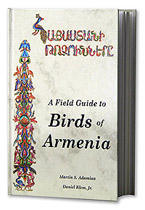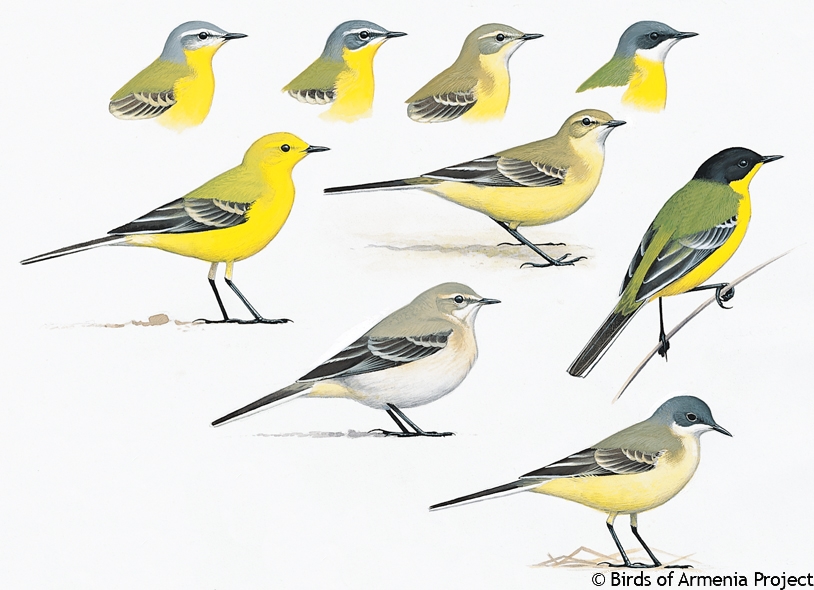- Pictures of All Birds
- Find Bird by Common Name
- Find Bird by Scientific Name
- Find Bird by Armenian Name
- Orders of Birds
- Distribution Maps
- Location of Armenia
- Species of Special Concern

Purchase the Field Guide
© Copyright Birds
of Armenia Project

| Armenian Name: | Դեղին խաղտտնիկ |
|---|

See Plate 40 for Yellow Wagtail and other similar species
| Resident Status: | Breeding bird |
|---|---|
| Abundance: | Common |
| Length: | 17 cm, Wing Span:23-27 cm |
| Distribution Map: | Map 215. |
| Description: | Highly variable; usually has green back, two narrow off-white wingbars, and yellow undertail coverts. |
| Adult: | Male: yellowish-green to gray-green above with darker wings; yellow underparts. Female: duller overall. Numerous subspecies best identified by head markings of breeding-plumaged males. Birds showing characters of the following races have occurred: M. f. lutea: yellow head. M. f. beema: pale blue-gray head, yellow chin, white supercilium and front part of ear coverts. M. f. flava: like M. f. beema, but with dark gray ear coverts. M. f. feldegg: black crown extending below eye and entirely yellow underparts. M. f. cinereocapilla: dark blue-gray crown, darker gray to black ear coverts, and white chin and throat. M. f. melanogrisea (not depicted): crown and ear coverts gray-black, chin stripe white, throat yellow. |
| Adult (Non-breeding): | After August, both sexes duller with less distinct head markings. |
| Juvenile: | Resembles immature but with yellowish-white undertail coverts and bold malar stripes. |
| Immature: | Resembles non-breeding female with yellowish undertail coverts but has brown-gray or yellow-gray upperparts. |
| Similar Species: | Adults differ from Citrine and Grey Wagtails by combination of greenish back, yellow belly and undertail coverts, narrow off-white wingbars. Immatures differ from Citrine Wagtail by dark lores, pale base of lower mandible, and yellow undertail coverts. |
| Behavior: | Gregarious on migration, and may breed semi-colonially. |
| Habitat: | Damp mountain steppe; on migration in lowland pastures, pond and lake shores. |
| Food: | Small invertebrates. |
| Nest: | Grassy cup in tussock on ground. |
| Eggs: | 19 mm, 4-6, gray-white, brown spots. |